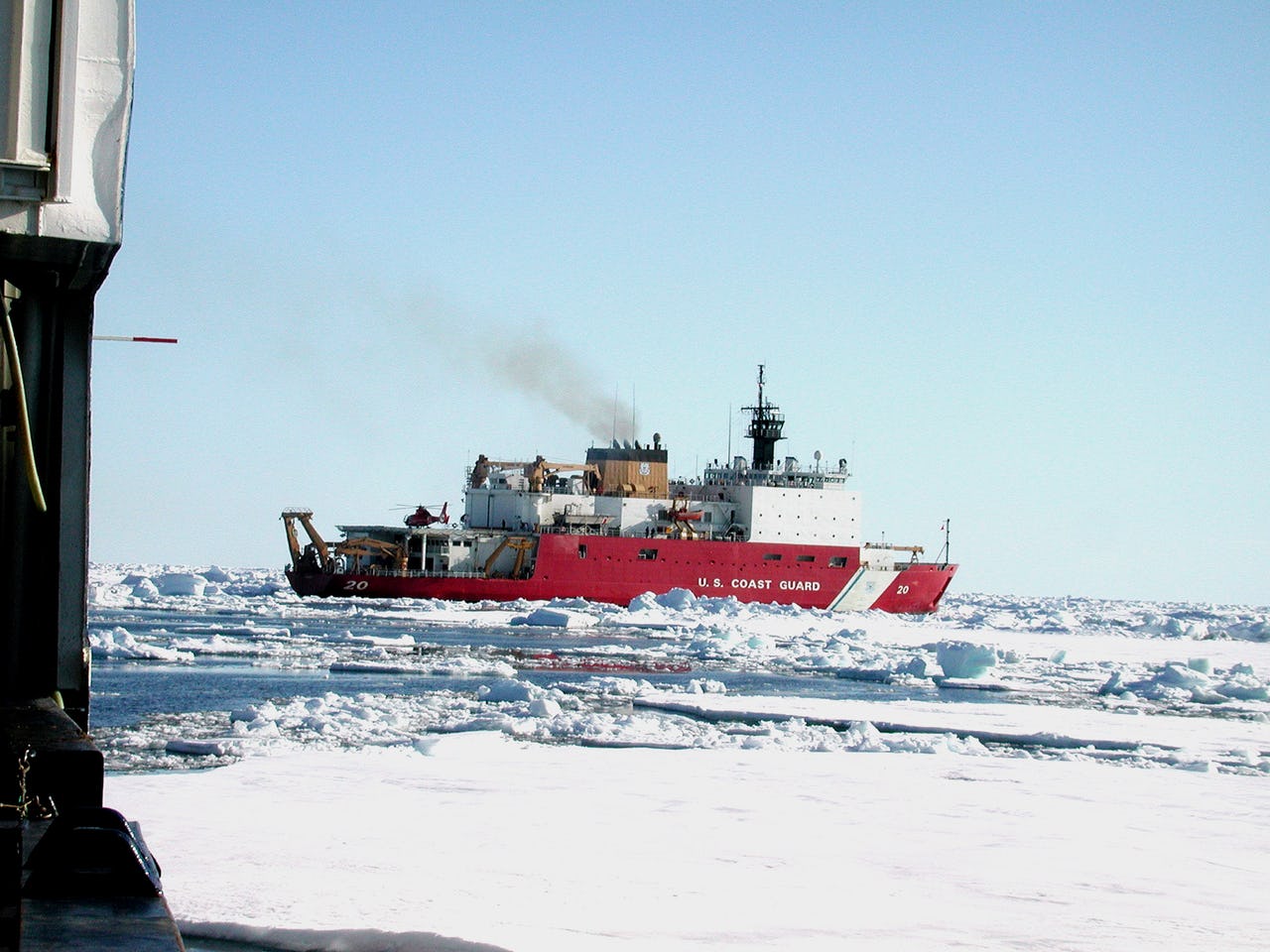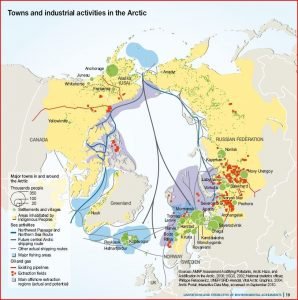Late to the Party or Premature Investments: The Debate on U.S. Arctic Capabilities

U.S. Coast Guard Cutter Healy. Photo: U.S. Coast Guard
As the temperature in Washington D.C. rose towards 100° F (38° C) during the summer months, Arctic issues were paradoxically enough frequent agenda items in the nations capital. One topic especially stood out: The United States Coast Guard (USCG) was campaigning for the American government to realize how severe the capability gap in the U.S.’s Arctic region has become.
In Senate hearings and in numerous seminars, ‘horror’ scenarios containing sinking cruise ships and oil spill disasters were used to portray the direness of the situation. On the one hand budgetary constraints may help to explain why the U.S. has invested less in its Arctic region than its Arctic counterparts. On the other hand, additional reasons may exist to explain the lack of attention devoted the High North. This nuance, however, seems to be lacking in parts of the American Arctic debate.
The Commandant of the U.S. Coast Guard, Admiral Robert J. Papp Jr., stressed that the Coast Guard in its current condition does not have the capacities it needs to respond to an oil spill or a cruise ship in distress in the Arctic.1) Neither is the National Oceanic and Atmospheric Administration (NOAA) able to collect and provide all the information on weather forecasting, oceanography, and navigational charting as requested by the Coast Guard, industries, and the local communities.2)
Coast Guard Commandant Adm. Bob Papp, Navy Rear Adm. David Titley and Ambassador David Balton testify before the U.S. Senate during a hearing on defending U.S. economic interests in the changing Arctic
In fact, the National Science Foundation (NSF) has repeatedly made use of Russian, Swedish, and Canadian icebreakers to transport American scientists into and around the U.S. Arctic, since U.S. capabilities were non-existent.3) At a Senate committee hearing on the July 28, 2011 , titled “Defending U.S. Economic Interests in the Changing Arctic: Is There a Strategy?”, representatives from the U.S. Navy, the State Department and the USCG all made the case that U.S. Arctic capabilities are severely lacking, reducing the the country’s ability to assert its Arctic interests.
The American Arctic undoubtedly holds large amounts of valuable resources, in terms of minerals, forestry, and hydrocarbons. The region is becoming significant from both an economic and a strategic point of view, as activities in the region have increased dramatically over the last ten years. Why then have the U.S. capabilities not followed suit? One obvious explanation derives from the Arctic’s rather limited role in American society. Compared to the other Arctic littoral states (Norway, Denmark – through Greenland -, Russia and Canada) the U.S. Arctic is both smaller geographically and less populated than its counterparts. The largest communities in Alaska’s Far North have three to four thousand inhabitants, mostly centered on the towns of Kotzebue, Prudhoe Bay and Barrow. In comparison, the largest Russian Arctic community is in the city of Murmansk, located close to the Norwegian border, with approximately 325,000 inhabitants. Of the 4 million people living in the wider definition of the Arctic, most are located in the Russian or Norwegian territories.4) Hence, the American capabilities, presence, and engagement in the Arctic have not matched that of the European Arctic nations.
Whereas the Arctic in Russia, Norway, and Canada has historically been used extensively to build national identity, the region has not been utilized to the same extent to define U.S. self-perception. Occupying only a small portion of the Arctic region, with a state that is far from the political and economic centers of the country, the Arctic has arguably been perceived as serving natural resource needs and military strategic interests located further south.Especially after the breakup of the USSR, the Arctic has not been of crucial importance to U.S. foreign policy interests, while it has in contrast defined some of the other Arctic nations’ post-Cold War identity. Therefore, where the Norwegian and Russian foreign policies in recent years have deemed the Arctic as a main strategic area of interest, the American approach has been hesitant and ad-hoc. As the United States has several geographical focal points, and operations in other parts of the world that require extensive involvement, the Arctic has not made the top-priority list. The American military budget is also overstretched and the current financial situation does not imply increased spending on a region that does not pose immediate concern.5)Does this mean that the American Arctic will inevitably be neglected in the upcoming decades, as the U.S. looks elsewhere? Or is there a need for a refurbishing and expansion of U.S. Arctic capabilities?
Towns and industrial activities in the Arctic
In the current regulatory environment for Arctic offshore drilling, the responsibility for spill response and preparedness lies with the operator of each specific field, not the government. Shell has a comprehensive response plan for the Arctic; with improvements made following the BP Macondo spill in the spring of 2010. They have provided extensive capabilities with several new vessels and new technology to be used specifically for oil spill response and preparedness in Arctic conditions. These include the ice-class spill response vessel ‘Nanuq’ and the ‘Arctic Endeavour’, an ice strengthened oil spill response barge.6) Shell therefore claims that the outcry over capabilities is exaggerated, as it is not the Coast Guard but the field’s operators that have to provide oil spill capacities should an incident occur.
In addition, the development of international cooperation agreements makes the need for capacity investment less acute. From a U.S. perspective, it seems clear that the development of joint Arctic agreements is of benefit to its Arctic interests. By placing emphasis on the development of frameworks for international assistance, starting with the signed search and rescue agreement from 2011, the US can rely on Canadian or Russian support should an Arctic incident occur. The U.S. is also chairing the task force mandated to develop an oil spill preparedness agreement similar to the search and rescue agreement. With easier means of cooperation, and clear structures for sharing equipment and personnel across borders, the immediate need to develop U.S. Arctic capabilities becomes less imminent.
Combined, the development of international agreements and the noticeable investments made by Shell for its Arctic offshore projects seem to dilute the direness of the Arctic situation. The US Department of Defense also emphasizes this in their latest report to Congress on Arctic operations, as there is a balance between the “risk of being late-to-need with the opportunity cost of making premature Arctic investments”.7)
However, even with efforts done by other Arctic states and oil and gas companies combined, some matters in U.S. Arctic waters cannot be disregarded. The U.S. Coast Guard is, and should continue to be, the primary provider of human security for Arctic coastal operations. The need for capabilities to deal with cruise ships, fishing vessels, and shipping through the Bering Strait, is crucial for the U.S. to continue to enforce its sovereignty as an Arctic nation.
The Chinese ice-breaker capacity as a non-Arctic state has already surpassed that of the United States, something that should cause concern in Washington DC. In addition, the Congress’ refusal to ratify the UNCLOS must be dealt with, through political sensibility and vigor. The UNCLOS is not a vehicle for disclaiming U.S. sovereignty, nor does its ratification place the U.S. at a disadvantages vis-à-vis its Arctic neighbors. On the contrary, it actually aids U.S. territorial claims in the Arctic and assists U.S. shipping and naval interests globally. The ratification should therefore be held above partisan considerations, serving U.S. interests at large.
It seems apparent that some of the American Arctic debate lacks a bit of nuance. Institutions, like the U.S. Coast Guard, the Department of Defense, or NOAA, are not completely neutral or unbiased actors. As any institution, company or organization, they are inclined to preserving their own importance and survival, pushing for decisions that serve their interests. In the Arctic debate they have, nonetheless, brought attention to some issues of relevance, highlighting the lack of U.S. Arctic investments.
The debate should, however, be put in a larger context, where more views and perceptions are incorporated. The Department of Defense’s cautionary approach, suggesting balance, subsequently seems fitting. Only by adopting a nuanced approach, can one understand the situation in the American Arctic, and make policy choices accordingly.
References

